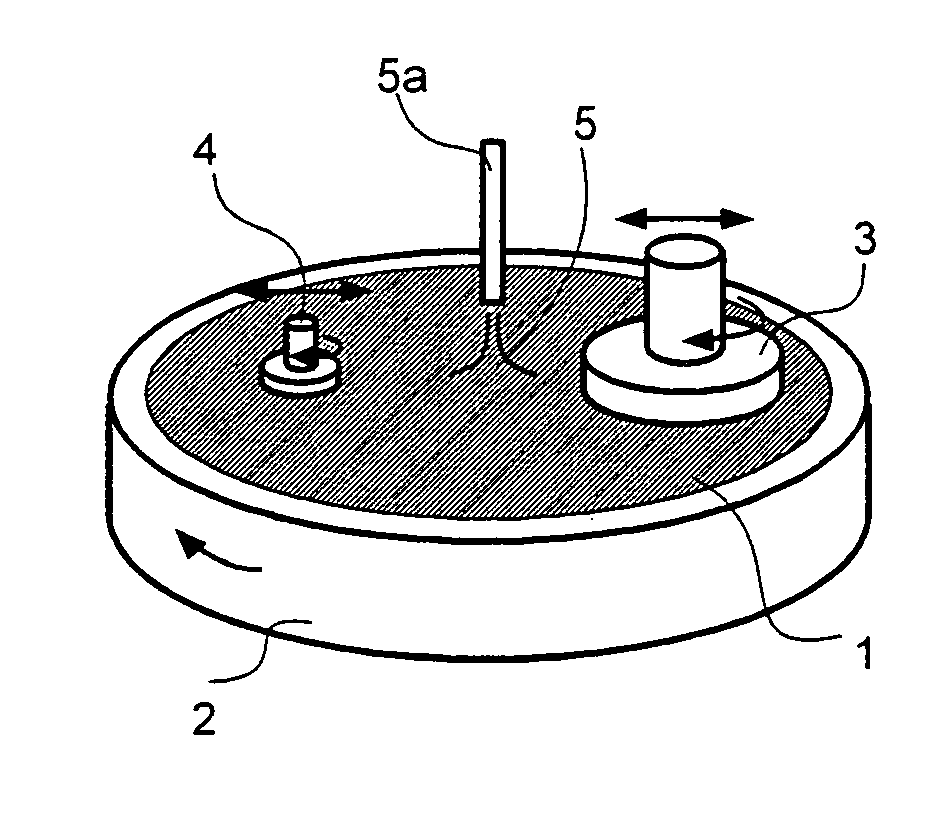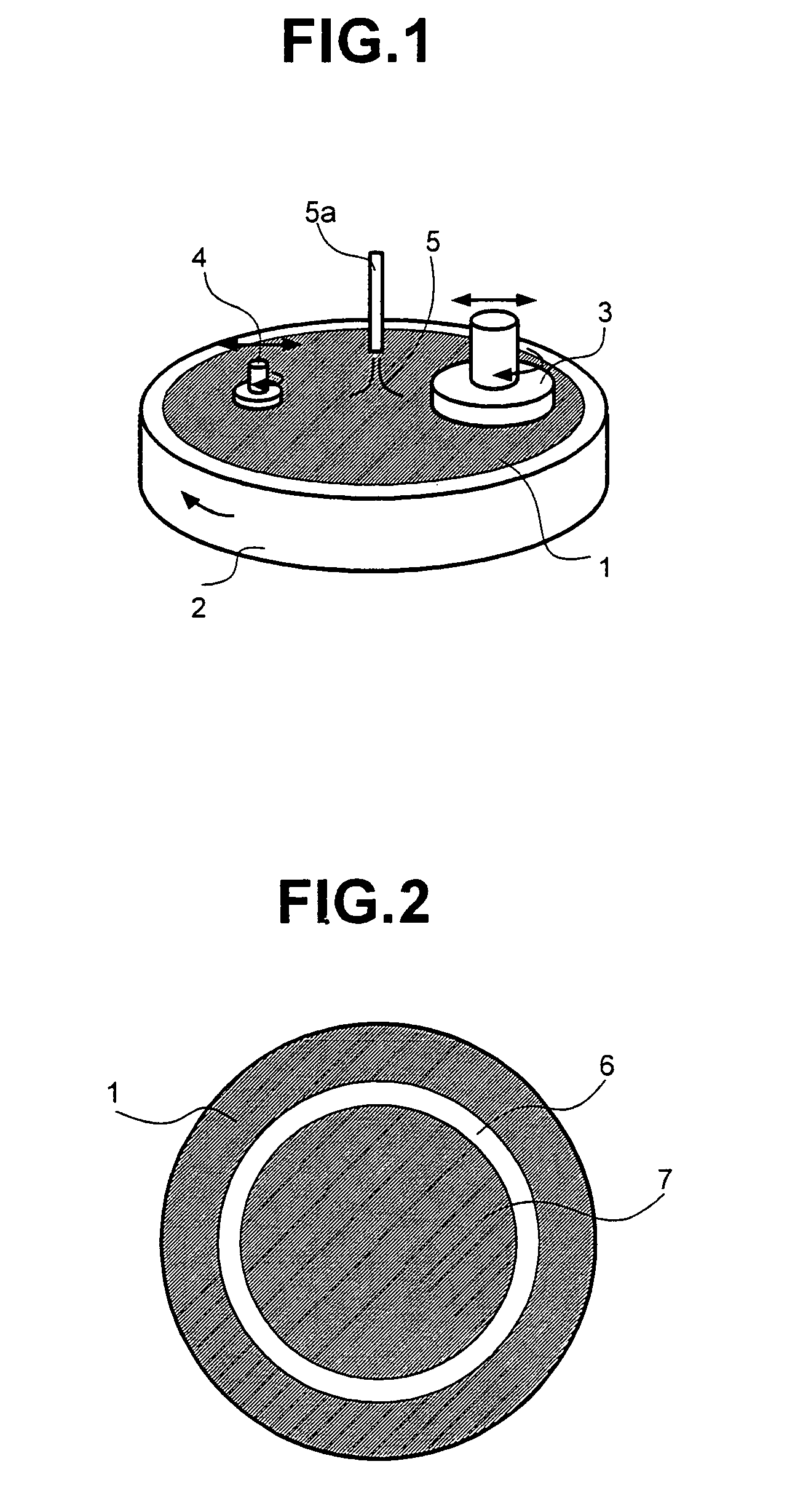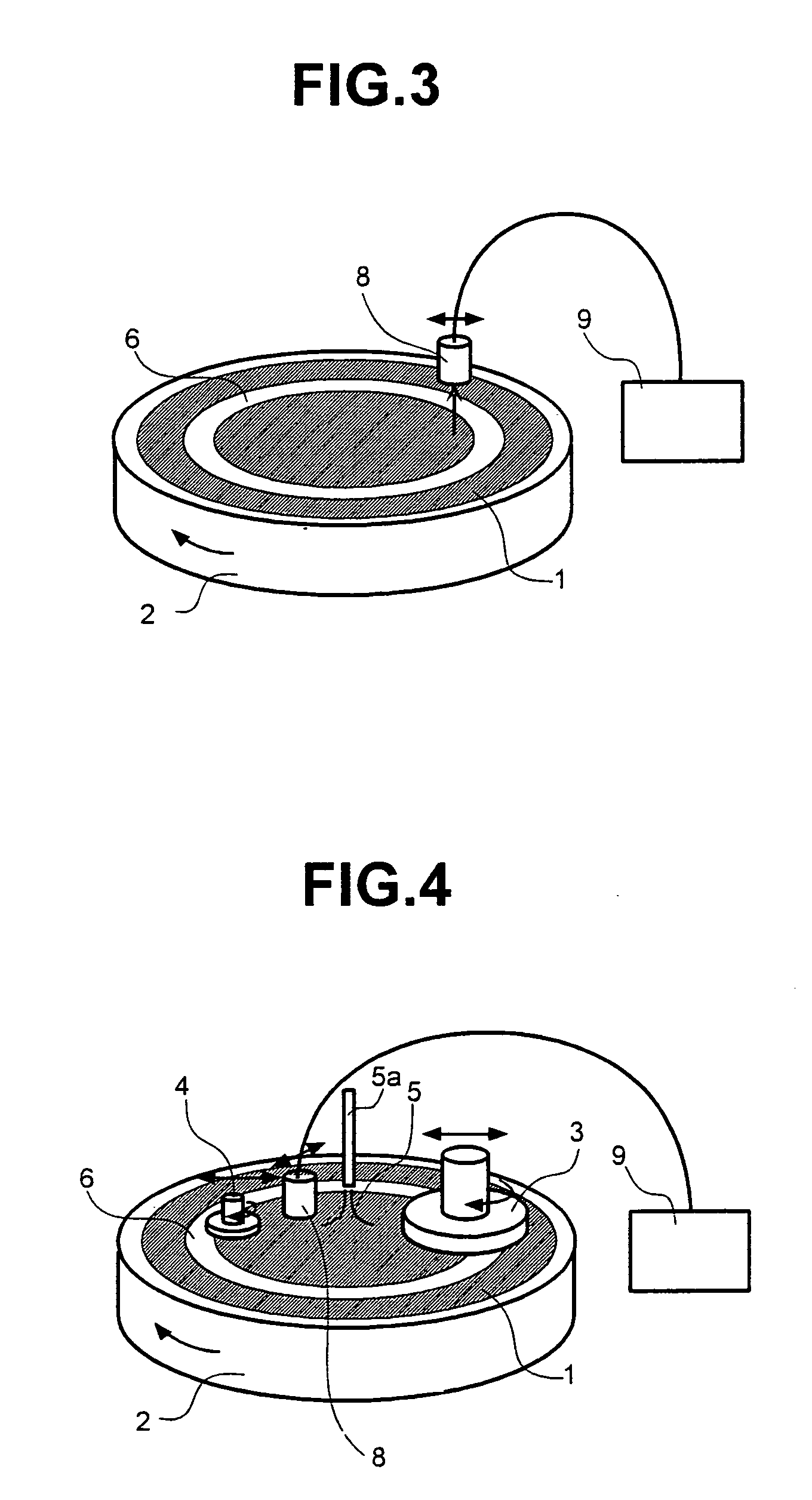Polishing pad surface condition evaluation method and an apparatus thereof and a method of producing a semiconductor device
a technology of condition evaluation and polishing pad, which is applied in the direction of abrasive surface conditioning devices, lapping machines, instruments, etc., can solve the problems of lithography, which is indispensable for forming wiring, and the unevenness of the wafer surface has increased,
- Summary
- Abstract
- Description
- Claims
- Application Information
AI Technical Summary
Benefits of technology
Problems solved by technology
Method used
Image
Examples
Embodiment Construction
[0049]The following is a description of specific embodiments of the present invention.
[0050]This description will use as an example a polishing process in which the item to be polished is a thin film with an uneven surface is formed on a substrate, and a polishing pad is used to polish the surface and make it planarized. An illumination light source is selected according to the structure of a detection optical surface, e.g., a monochromatic light such as a laser light source or a white light such as a halogen lamp.
[0051]First, six representative examples of how the surface condition of the polishing pad is evaluated will be described.
[0052](1) During the polishing process, a light such as a monochromatic laser light is used to illuminate the surface of the polishing pad. The light reflected from the illuminated region of the polishing pad is detected using an optical system. The surface condition of the polishing pad is evaluated based on the detected intensity of the reflected ligh...
PUM
| Property | Measurement | Unit |
|---|---|---|
| surface conditions | aaaaa | aaaaa |
| area | aaaaa | aaaaa |
| optical imaging | aaaaa | aaaaa |
Abstract
Description
Claims
Application Information
 Login to View More
Login to View More - R&D
- Intellectual Property
- Life Sciences
- Materials
- Tech Scout
- Unparalleled Data Quality
- Higher Quality Content
- 60% Fewer Hallucinations
Browse by: Latest US Patents, China's latest patents, Technical Efficacy Thesaurus, Application Domain, Technology Topic, Popular Technical Reports.
© 2025 PatSnap. All rights reserved.Legal|Privacy policy|Modern Slavery Act Transparency Statement|Sitemap|About US| Contact US: help@patsnap.com



